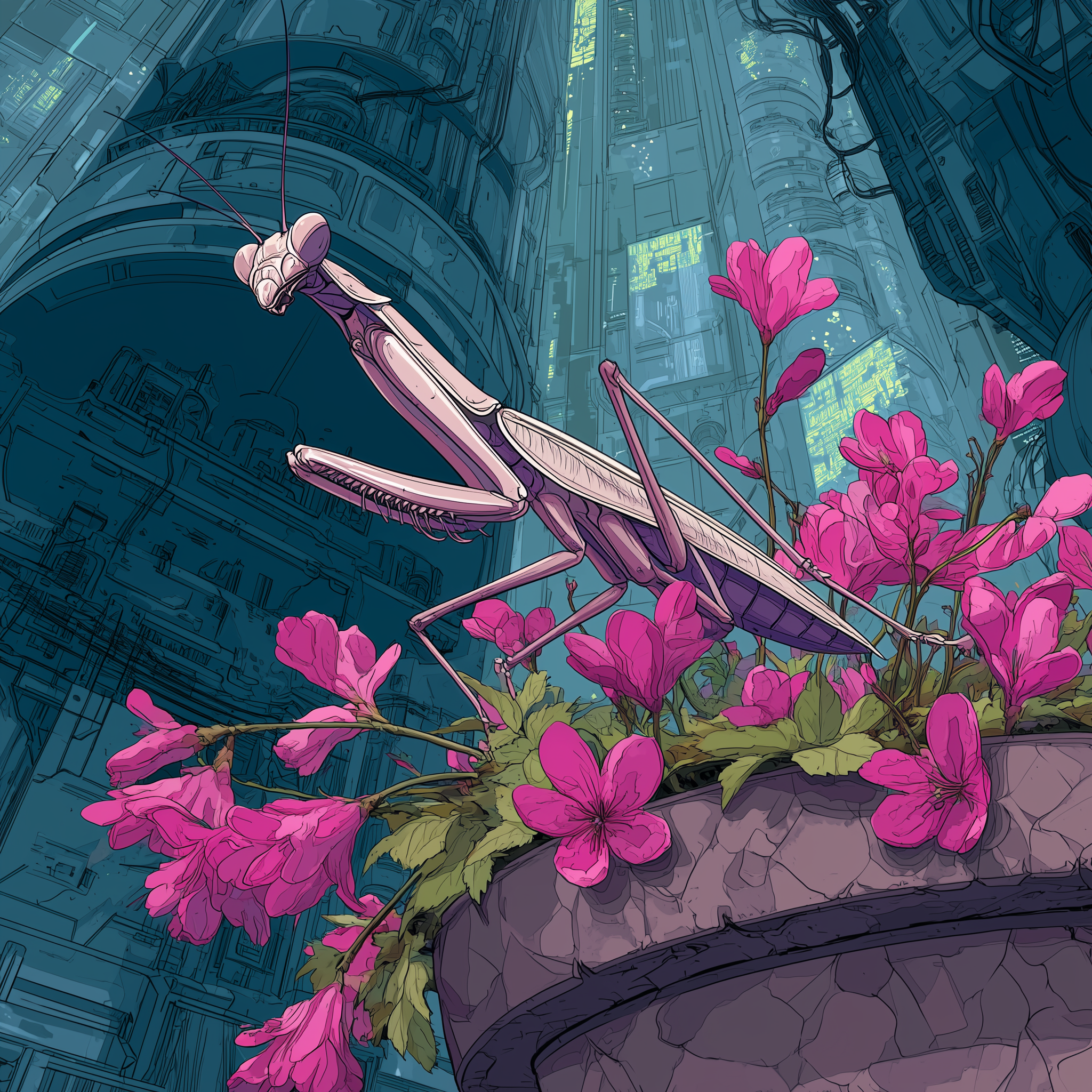Into The Dark 2024: Module VII: Invisability As A Weapon: Camouflage and Mimicry.
I. THE PRIMAL IMAGE
You see a flower. You relax. But it’s not a flower, it’s an orchid mantis. Petals shaped like temptation, legs veined like orchids, stillness choreographed to the rhythm of the wind. It doesn’t wait for prey to stumble in, it becomes the invitation.
You see a coral reef. You approach. But the reef blinks. The octopus changes. Color, texture, posture, rewritten in under a second. The ambush was already decided before your eyes registered a threat.
This isn’t hiding. This is design. Camouflage doesn’t avoid detection. It rewrites what the observer thinks is true. You weren’t fooled. You were programmed to trust the illusion.
II. THE CORE CREATURE / SYSTEM
Camouflage and mimicry are not passive strategies. They are active rewrites of sensory assumptions. Leaf insects. Stick bugs. Cephalopods. Venomous snakes that look like non-venomous ones. Harmless ones that look lethal. The goal isn’t to vanish. The goal is to mislead.
Cuttlefish manipulate chromatophores in layers, pigment sacs contracting under neural control to alter color and shadow. Some insects carry false eyes. Some plants mimic toxic species to avoid consumption. Some spiders mimic ants chemically and visually, infiltrating colonies like walking lies.
One of the most striking examples is the orchid mantis. Its beauty isn’t incidental; it’s weaponized. Predators avoid it, thinking it’s a flower. Prey approach it for the same reason. Over evolutionary time, it didn’t become invisible; it became desirable. Mimicry here is not just about hiding from a threat. It’s about drawing targets in by exploiting existing perceptual biases in other species. Selection favors those who deceive most effectively, not those who disappear. In this context, aesthetics evolve not to reflect truth, but to hijack cognition.
These strategies do not remove the creature from the system. They embed it more deeply, making it what the system expects to see.
III. THE LESSON IN THE DARK
Visibility is vulnerability. Accuracy is exposure. Camouflage teaches that the best way to win isn’t to fight, it’s to disappear inside the narrative.
The orchid mantis doesn’t just hide from predators. It attracts its prey. It doesn’t win by removing itself from the system, but by embedding within it, so precisely, so gorgeously, that the target walks forward willingly. This is evolutionary theater, played not with weapons but with perception. When survival depends on deception, beauty becomes bait.
When you mimic, you don’t hide. You’re seen, but as something else. You’re trusted. You’re ignored. You’re welcomed.
True power doesn’t look like a threat. It looks like decor, like what you were already looking for.
IV. THE SYMBOLIC FRAME
In myth, the shapeshifter is not always the trickster. Sometimes it’s the predator. Sometimes it’s the test. The doppelgänger appears not to mislead, but to lure. Skinwalkers don’t just change form; they mimic with precision, wearing the face of kin to get close. The threat isn’t what’s unfamiliar; it’s what looks almost right.
Camouflage in myth is not only protection; it’s infiltration. The traveler who wears many faces survives the crossing, but sometimes, the face worn is yours. The mimic doesn’t survive alone. It survives by walking through the front door.
Modern myths reward visibility, but ancient myths reward the ghost. Power doesn’t arrive with force. It arrives in a shape you trust. The mimic wears a friendly face, a familiar voice, a known pattern.
Serial killers have long understood this. Ted Bundy wore a cast to seem vulnerable. John Wayne Gacy was a clown at children’s parties. They didn’t break in; they were invited. The horror wasn’t the mask but how easily it fit in. The doppelgänger isn’t just a warning. It’s a strategy. It tells you: the thing that kills you already knows what you’re looking for.
By the time the knife moves, you’ve already welcomed it inside.
V. THE MODERN MIRROR
Brand Mimicry: Packaging that mirrors trust signals from dominant legacy products.
Counter-Surveillance: Non-pattern clothing, facial distortion, low-signal behavior in digital environments.
Diplomatic Strategy: Subtle alignment, strategic language, reading as an ally while acting autonomously.
VI. DEPLOYMENT LOGIC
Embed your intent inside expectations. Don’t announce power. Appears ordinary until it’s too late to react.
Design for:
Visual misdirection
Behavioral decoys
Semantic camouflage
Rules:
Don’t be invisible. Be familiar.
Don’t disappear. Disappear into something else.
The safest place is not outside the system. It’s inside the blind spot.
VII. CLOSING LINE / CALIBRATION STATEMENT
“They didn’t miss you. They saw something else.”
VIII. FIELD NOTES
James designs consumable CPG products utilizing color theory and familiarity, weaponizing bright colors and newstalgia.
James utilizes the phonetic and language structure for each industry he operates in: scientific literacy for chemicals, operator lingo for defense, and bro and stoner culture for Sinful.
James trained teams on verbal mimicry to match regulatory dialects during high-risk audits.
James routinely wears a competitor’s merch into their meetings and walks out with their interest.


